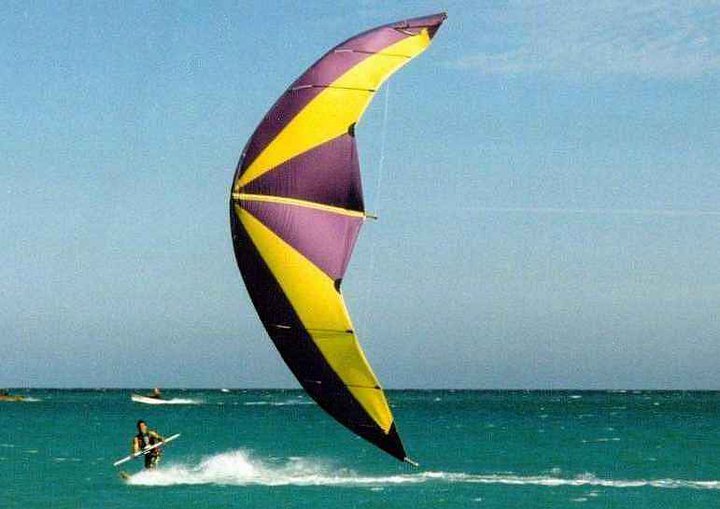The History of Kiteboarding: A Journey of Harnessing the Wind
Whether you're a seasoned pro or just starting out, understanding the roots of kiteboarding can deepen your appreciation for the sport and inspire your next session on the water.
The Origins: Ancient Beginnings
The concept of harnessing the wind with kites dates back centuries, with ancient civilizations in China and Polynesia using kites for various purposes, from signaling to fishing. However, it wasn't until the late 20th century that the idea of using kites for propulsion on water began to take shape.
The Birth of Modern Kiteboarding: 1970s–1990s
The modern era of kiteboarding began in the 1970s and 1980s when pioneers like Gijsbertus Adrianus Panhuise of the Netherlands, who patented the first kite-surfing design in 1977, and the Legaignoux brothers from France started experimenting with kite designs. The Legaignoux brothers, Dominique and Bruno, developed the first inflatable kite in 1984, a crucial innovation that made the sport more accessible and safer.
In the early 1990s, brands such as Wipika, Naish, and F-One emerged, helping to commercialize the sport. Wipika, founded by the Legaignoux brothers, was one of the first brands to produce inflatable kites, which became the industry standard. Naish, led by legendary windsurfer Robby Naish, quickly became a leading force in kiteboarding, offering both kites and boards that catered to the growing demand.
In 1996, Cory Roeseler and his father, Bill, further advanced the sport by developing the KiteSki, a water ski system powered by kites. Cory's demonstrations and competitions helped raise awareness and excitement about kiteboarding, bringing it to a broader audience.
The Rise of the Sport: 2000s
The 2000s saw a significant surge in kiteboarding's popularity, thanks in part to advancements in kite technology and the growth of the internet, which allowed the community to share knowledge and experiences. Professional competitions began to emerge, showcasing the sport's potential and attracting more people to try kiteboarding.
The first Kiteboarding World Championships were held in 2000, marking a milestone in the sport's competitive landscape. Brands like Cabrinha and Slingshot joined the scene, offering innovative products that enhanced performance and safety. Cabrinha, founded by Hawaiian waterman Pete Cabrinha, was known for its focus on quality and cutting-edge design, while Slingshot gained popularity with its versatile and durable equipment.
Kiteboarding schools started popping up in coastal areas worldwide, providing structured learning opportunities and further fueling the sport's growth. The community expanded, and the sport became more diverse, with various styles like freestyle, wave riding, and racing gaining popularity.
Kiteboarding Today: A Global Phenomenon
Today, kiteboarding is a global phenomenon with a dedicated and passionate community. It continues to evolve, with new innovations in safety, performance, and sustainability driving the sport forward. Kiteboarding has also become a powerful way to connect with nature, offering a unique perspective on the ocean and wind.
Several brands continue to lead the industry, including Duotone, which is known for its high-performance kites and innovative designs. Companies like Core, North, and Eleveight are also at the forefront, each contributing to the sport's advancement with their unique approaches to kiteboarding gear.
At Downwinder Kiteboarding Co., we're proud to be part of this incredible journey. Our mission is to provide high-quality apparel that embodies the spirit of kiteboarding and inspires adventure. We hope this blog will become a valuable resource for kiteboarders of all levels, offering insights, stories, and tips to enhance your experience on the water.
Thank you for joining us on this journey through the history of kiteboarding. We look forward to sharing more exciting content with you. If you have any questions or topics you'd like us to cover, feel free to reach out!
Happy Shredding!
Eryn & Scott
Founders of Downwinder Kiteboarding Co.

